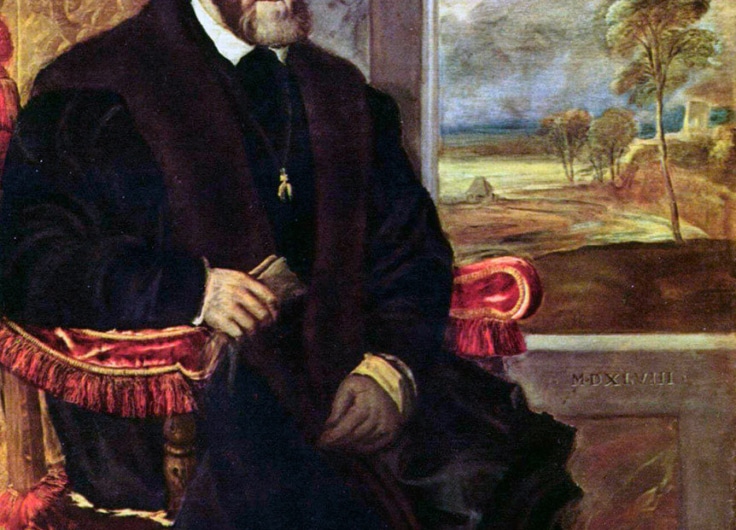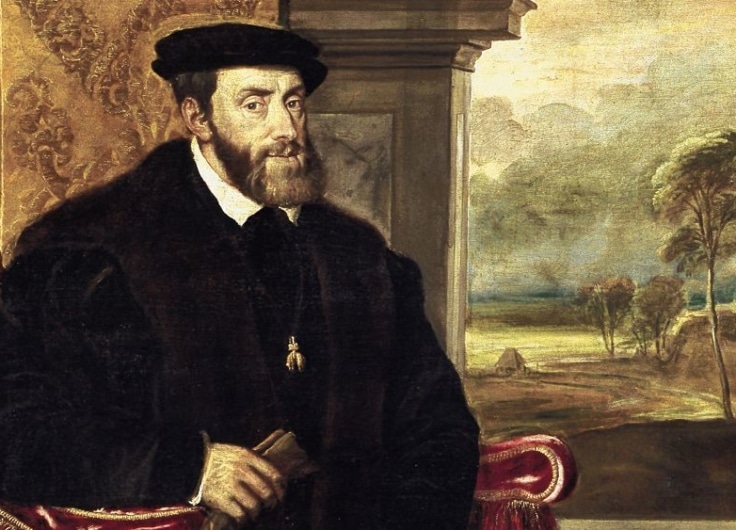Almost no one ever visits the Prinsenhofplein in Ghent. Yet this quiet, leafy square was once the courtyard of a magnificent 15th-century palace with more than 300 rooms, a pleasure garden and a zoo with lions.
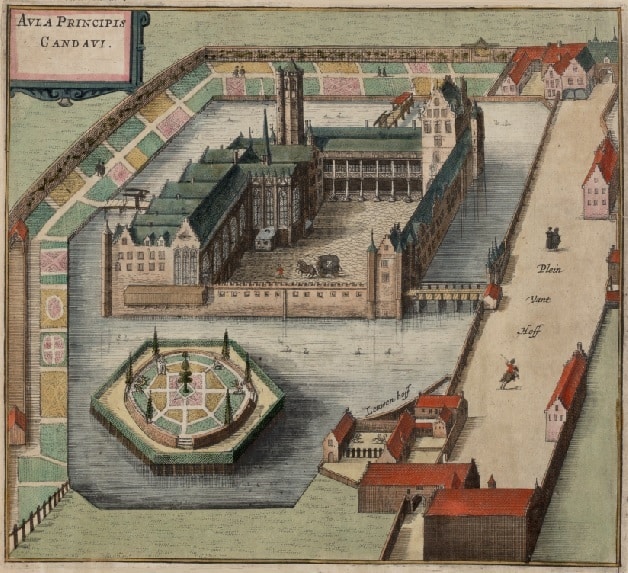 Engraving of the Prinsenhof from Flandria Illustrata (1641)
Engraving of the Prinsenhof from Flandria Illustrata (1641)© Wikipedia
It was here, on 24 February 1500, that Joanna of Castile gave birth to a son. The boy grew up to become Emperor Charles V, inheriting lands that stretched across Europe from the Low Countries to Spain.
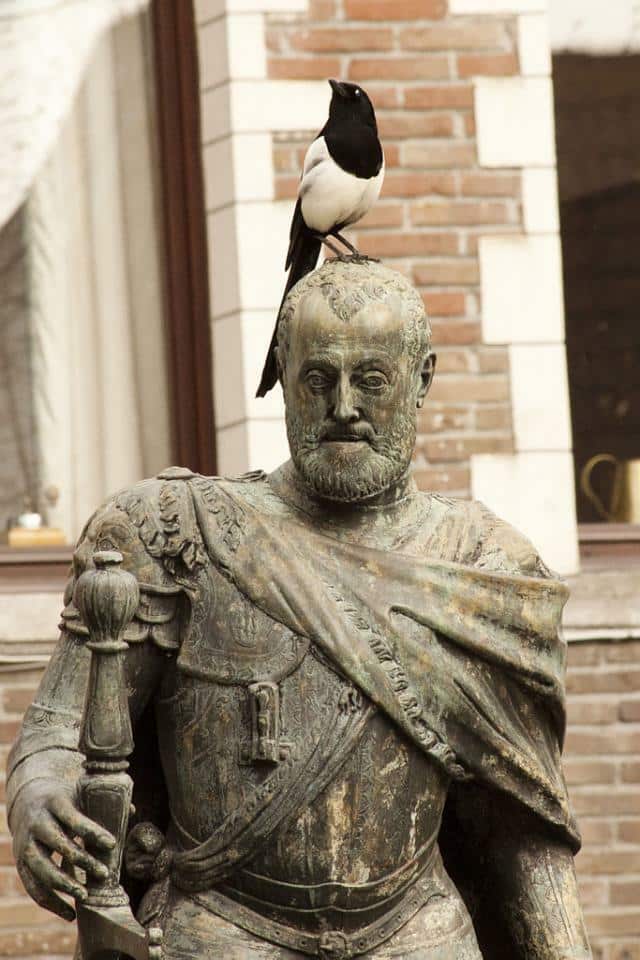 Statue of Charles V in the Prinsenhofplein
Statue of Charles V in the Prinsenhofplein© Wikimapia
The palace has vanished as if it never existed. All that remains is a gatehouse called Donkerpoort, a scale model of the complex and a bronze statue of Charles placed in the middle of the square in 1966.
Not far from here, a footbridge across the Lieve canal is called The Bridge of the Emperor’s Pleasures. It is decorated with four sculptures by folk singer Walter De Buck illustrating episodes from the life of Charles V. Three of the sculptures represent the Emperor seducing young women.
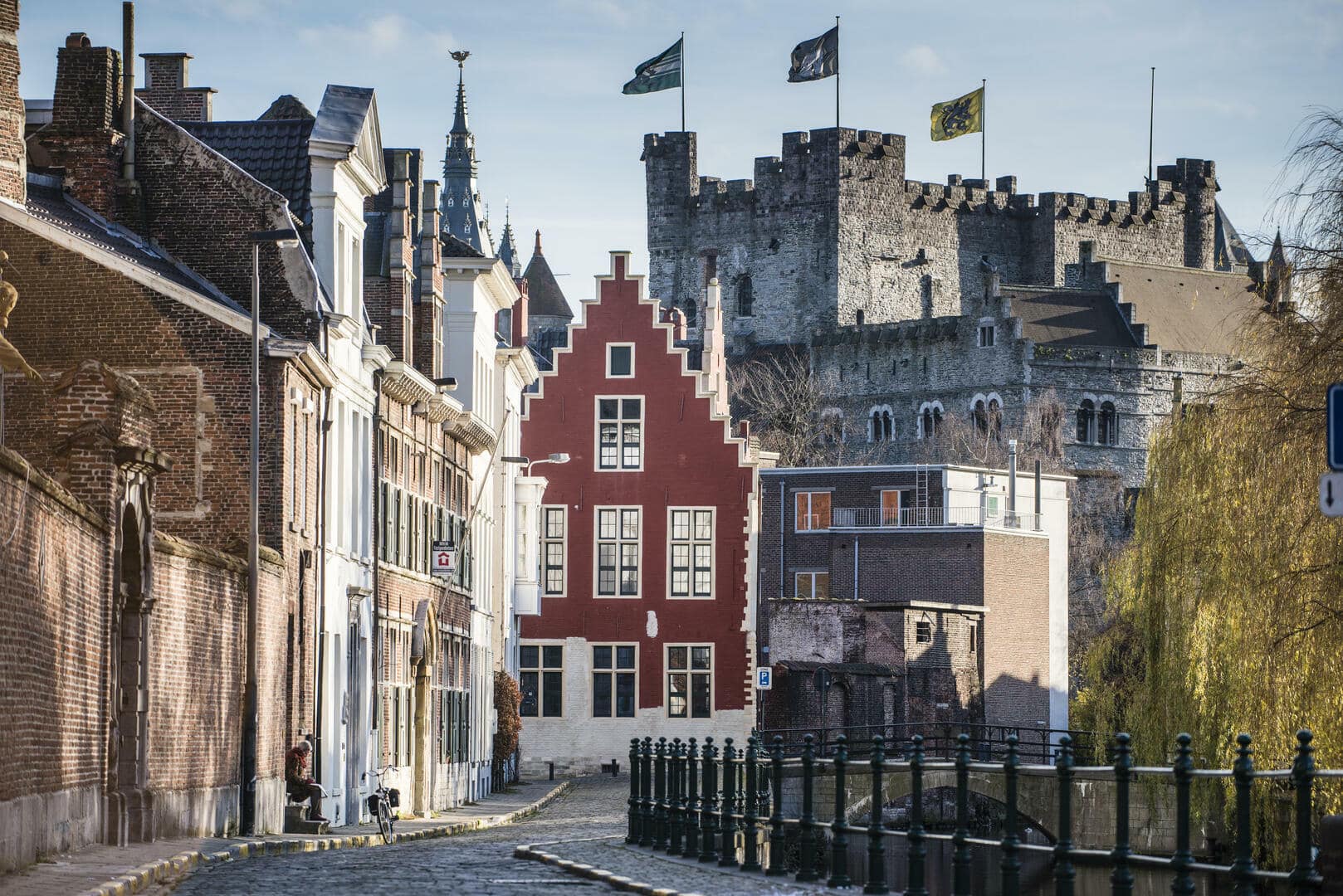 Along the Lieve canal with view of the Castle of the Counts and the Belfry tower with dragon
Along the Lieve canal with view of the Castle of the Counts and the Belfry tower with dragon© Visit Gent
The city of Ghent isn’t particularly fond of Charles. He is mostly remembered for an event on 24 February 1540, his 40th birthday, when he humiliated city officials who had refused to pay a tax. They were ordered to walk barefoot through the city wearing hangman’s nooses around their necks. Ever since this event, the citizens of Ghent have been nicknamed the Stroppendragers, or noose bearers, as a symbol of resistance against tyranny and misplaced authority. A modern statue placed just outside the Donkerpoort represents one of the Stroppendragers.
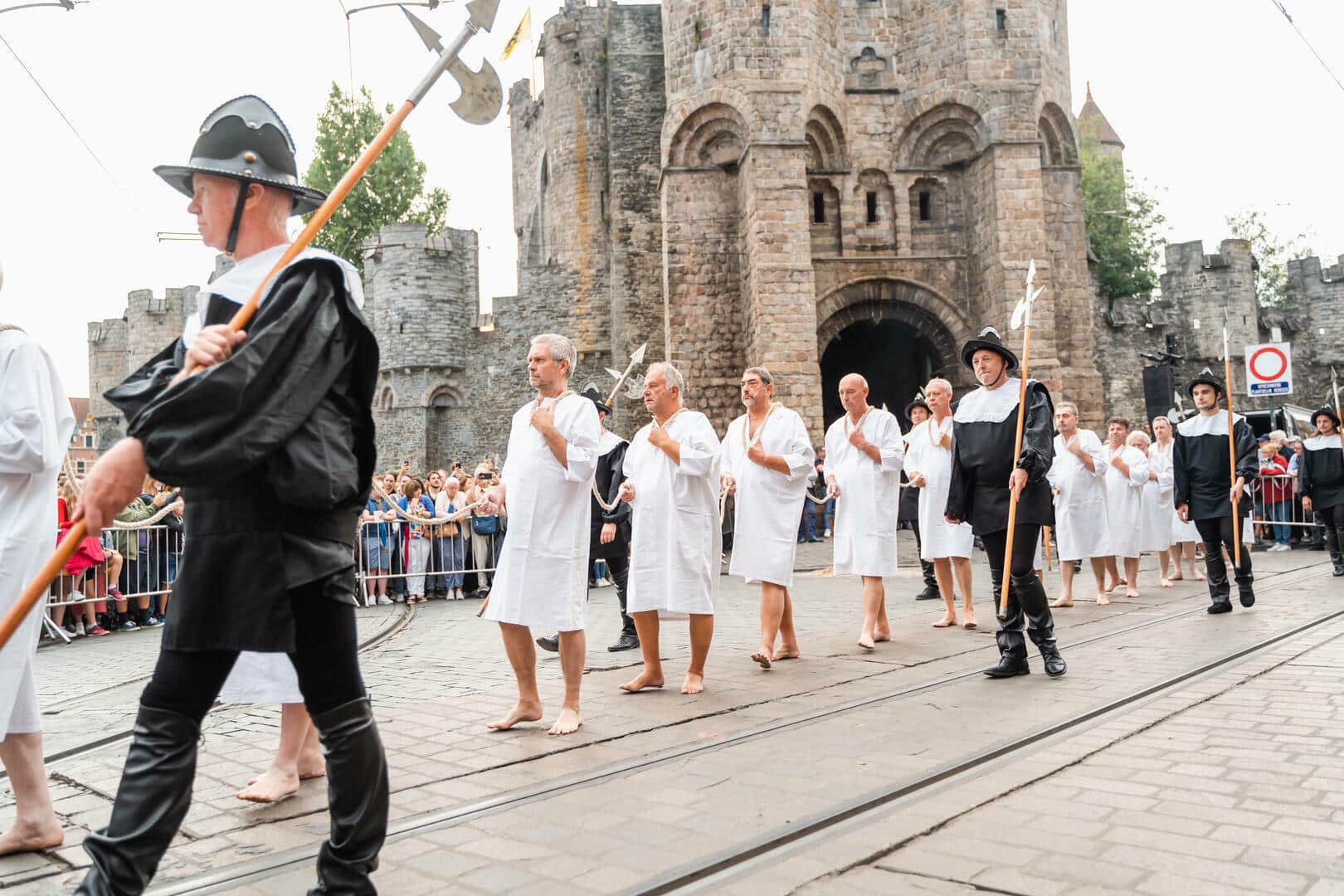 Procession of Emperor Charles and the noose bearers
Procession of Emperor Charles and the noose bearers© Visit Gent
The city has also put up two plaques inside the Donkerpoort listing men and women who were executed in Ghent under Charles V. Some were beheaded. Others were burned at the stake. And a woman called Anna van de Velde was buried alive.
They were mostly Protestants arguing for a new religion. But Charles refused to allow it.


